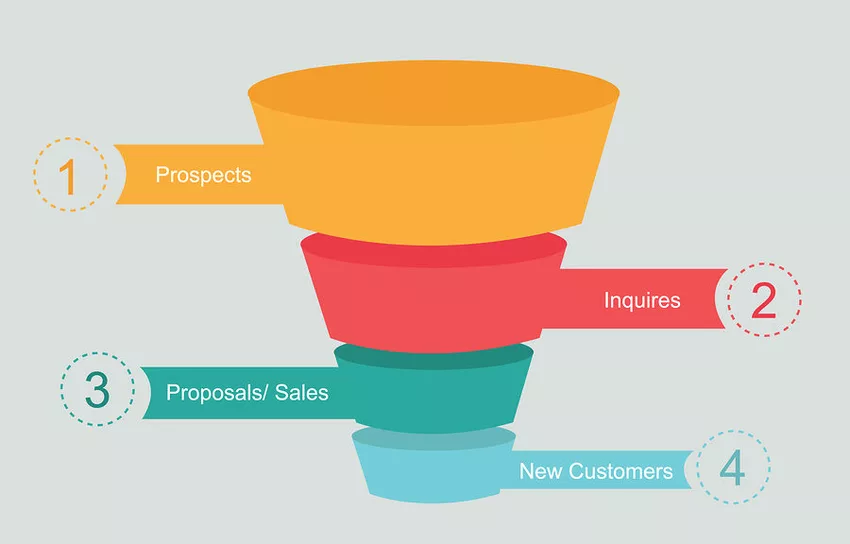When the question of what online video platform to use is posed, nearly every person’s mind will immediately jump to YouTube. It’s understandable considering the sheer size of the platform – it has over a billion active users and is the second largest search engine after Google itself. The kind of reach you can achieve on YouTube is impressive on it face.

Yet, it isn’t always the platform to do the job. Even the most famous YouTubers are already experiencing a slowdown due to its complex algorithms and looking for other options to keep their vlogging going.
However, for enterprises, there are certain important considerations that have to be made before settling on a public-first solution like YouTube. Despite the free price tag, there are certain things private hosts are much better at doing better than YouTube.
Privacy controls
YouTube has grown to an incredible extent it’s at today because any video that’s uploaded to the site it public by default. You can definitely flip the switch and make it so that it’s either private, unlisted or public, but each of these settings has their own quirks. Private videos are only available to the uploader and unlisted videos can be viewed by anyone with a link to the video.
The problems posed by YouTube’s privacy system should be immediately apparent. Should a link to the video leak online somehow, anyone who gets it will be able to access it.

Private videos, on the other hand, are not simple to share. Should a competitor be able to get a link to your competitive marketing research videos, for instance, someone is definitely going to get fired.
Private video platforms handle the sharing of media differently since they are private-by-default platforms. Who can access the videos is at the discretion of whoever is in charge of uploading the videos.
Some providers allow you to protect the videos using passwords while others allow the main administrator to delegate permissions via a series of access checks. Access can even be granted via IP filtering, for instance. If you’re part of an intranet, everyone outside the organization has no way of getting access to your information.
Analytics
YouTube as a platform offers a wide range of analytics metrics that even the untrained eye can monitor and keep track of trends. This consists of demographic information for each channel, including age information and a rough estimate of locations for every channel.
These are suitable for the average YouTube channel owner, which happens to be people who aren’t interested in more detailed metrics. Besides which, the analytics details are dumbed down and anonymized, so you can’t track specific users.

It may seem pretty ironic that the company best known for owning the largest analytics firm in the world doesn’t provide the same amount of details on one of its platforms, but it’s not entirely their fault. Private hosting sites are not held by the same amount of constraints that YouTube is. This effectively allows them to provide more specific targeting than Google’s platform.
Aside from the basic demographic and view-count metrics, they also allow specific filtering such as where most people stop watching the video, and, for instance, correlating this with their age or location.
These metrics can be made use of in an extraordinary number of ways. For instance, knowing where most users trail off allows you to make changes so that they remain interested throughout.
Branding and customization
A lack of ways to customize embedded videos is arguably the strongest argument anyone can come up with for not using YouTube. On average, good-looking videos that fit the overall aesthetic of the rest of the site will get more clicks than a randomly thrown video.

In fact, they’re known to increase user engagement by as much as 30%. As it stands, YouTube doesn’t allow anyone to change the overall look of their video player. 83% of video marketers say that video marketing plays a key role in increasing brand awareness. 73% of customers are reported to buy a product after watching a product video. You need full control of your video content to reach this optimum number which is not possible if YouTube is the medium for video marketing.
That bright red palette must be maintained, and the logo plus a link to the channel that posted the video must also remain in place. In fact, tampering with the video player in any way is against their terms of service.
Private video hosts allow you to do pretty much anything you want with the video player. Want to change the palette from glimmering blue to a nice cool orange? You’re good. Need to move buttons around so they are more comfortable to click or add a quirky skin that the niche market you represent will instantly relate to? Nothing is stopping you.
Some even go as far as to provide a WYSIWYG drag-and-drop views to make it even easier to customize your pages.

It doesn’t help that showing any form of branding in the first five seconds in a YouTube video leads to a noticeable drop in the number of complete video watches an ad registers. Branding on YouTube wouldn’t do any good in any case.
Traffic
Internet traffic can be thought of as what makes some websites worth a lot more than others are – it’s what makes sites like YouTube and Google as dominant as they are.
With all the traffic YouTube has, it may seem like integrating them into your site is an excellent idea, but it’s not that clear cut. YouTube depends a lot on other sites to drive traffic to their site, hence the mandatory logo and channel thumbnails.
One of the mechanisms in which this works is once your video is done playing, YouTube recommends more videos not based on your own but the user’s particular interests. If they click on one of these thumbnails, you help drive traffic to their site and away from your own.
If you’re looking to grow your own site and get your brand more recognizable on the internet, a private video host will be more to your liking. Aside from being able to redirect the traffic to anywhere you want – maybe a third-party site that you also own or that supports you – most video hosts are also SEO optimized.

Granted, this also applies to YouTube, since they also employ JSON-LD, which makes indexing, crawling and keyword optimization easier and faster.
Integrations
Another key feature that’s noticeably missing from YouTube is the ability to directly integrate with third-party services where you perhaps store or process your data. For instance, if you use one of Cincopa’s excellent turnstile features to collect emails, they can then be passed to MailChimp and automatically added to an email subscription list.
Additionally, if you also rely on services like Marketo, plugging them all together is as easy as clicking a few buttons and everything will be up and running.
Lead generation
With all that said, the decision on whether to rely on private video hosts or YouTube relies on a lot more factors other than the ones mentioned above.

Lead generation is a lot easier on private video hosts, for example, since a lot of them offer additional features that allow you to relate with the viewers more easily. These include the aforementioned turnstiles and chat support.
Conclusion
At the end of it all, it’s not necessarily a matter of ‘this or the other.’ A great deal of brands utilizes both YouTube and private hosts for public and internal video hosts respectively. It depends on the layout of your organization more than anything. But if you want more control of your video content, go for the private hosting without a second thought.









